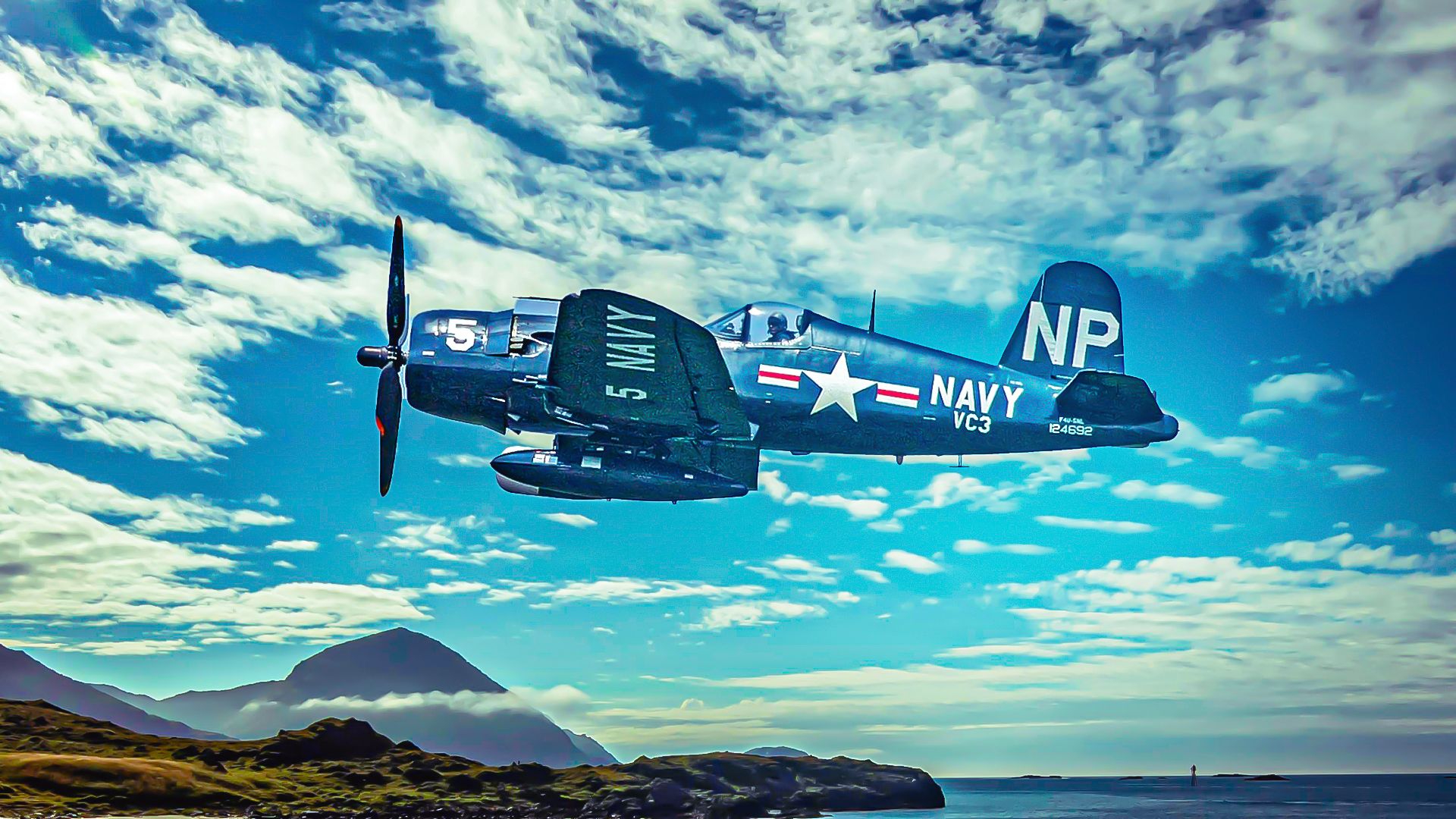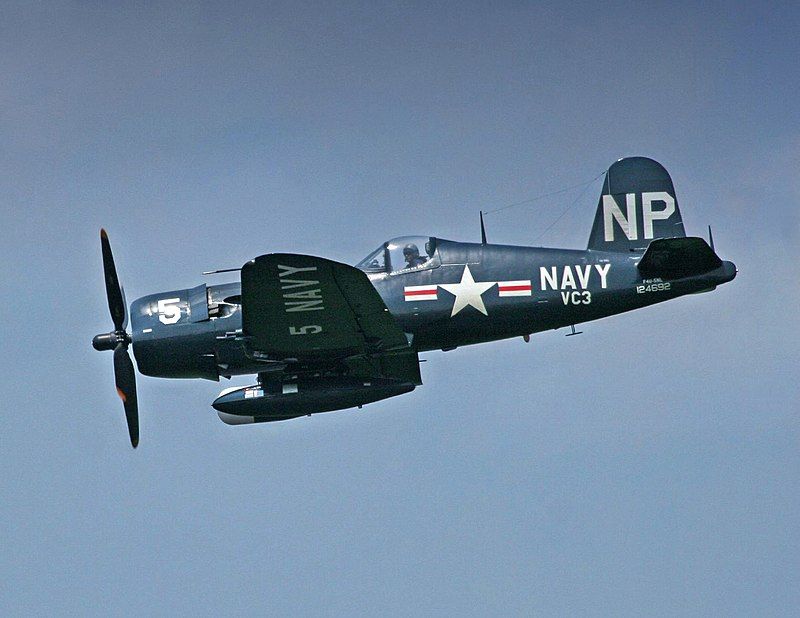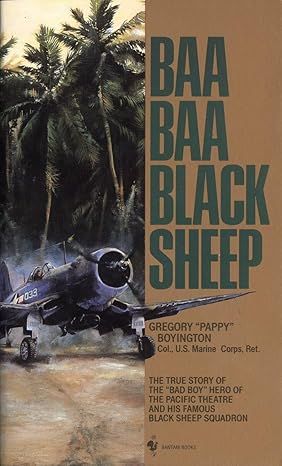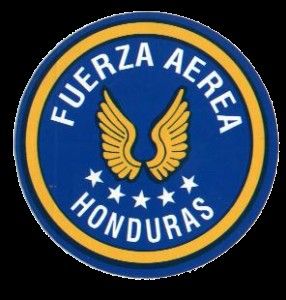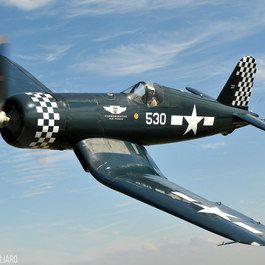Summary
- WWII fighter planes earned deadly nicknames like “fork-tailed devil” and “Whistling Death” from adversaries.
- The Vought F4U Corsair had a 12:1 air-to-air kill ratio against the Mitsubishi A6M Zero in WWII.
- Retired in 1953, 45 privately owned F4Us can still be found in the US, displayed in museums and flown by organizations.
Besides actual kill ratios against enemy aircraft, one of the great testaments to a fighter plane’s combat efficacy is the respectfully deadly nicknames bestowed upon it by those adversaries. For example, during World War II, the Lockheed P-38 Lightning was nicknamed “Der Gabelschwanz Teufel” (the fork-tailed devil) by Nazi Germany’s Luftwaffe.
Though the post-WWII German Bundeswehr saw fit to change its army’s name from Wehrmacht to Heer and its navy’s name from Kriegsmarine to Bundesmarine, the air force still retains the Luftwaffe moniker.
In the case of another famous WWII American fighter plane, the US Navy and Marine Corps’ Vought F4U Corsair, the nickname of “Whistling Death” (口笛を吹く死/kuchibue wa fuku shi) bestowed upon it by the Imperial Japanese Navy (IJN; 大日本帝國海軍/ Dai-Nippon Teikoku Kaigun) and Imperial Japanese Army Air Service (IJAAS; 大日本帝國陸軍航空部隊/Dainippon Teikoku Rikugun Kōkūbutai) may very well have been apocryphal, as official Japanese wartime records do not acknowledge bestowing the unofficial title. But there’s no doubt that the gull-winged Corsair was indeed a truly deadly adversary to its Japanese opponents. Simple Flying now explores how and why the F4U truly merited the “Whistling Death” moniker, historical veracity or lack thereof notwithstanding.
Vought F4U Corsair early history and specifications
The F4U Corsair made its maiden flight on May 29, 1940, and officially entered into operational service with the USN & USMC on December 28, 1942. Built my the now-defunct Chance Vought corporation (the company’s final iteration was Ling-Temco-Vought [LTV], which went belly-up in 2001), it was the fourth out of a total of five warbirds to proudly bear the Corsair (another word for “pirate”) moniker:
- Vought O2U/O3U Corsair, a 1920s vintage US Navy biplane scout and observation aircraft
- Vought SBU Corsair, a US Navy biplane dive bomber first flown in 1933
- Vought O4U Corsair, two different early 1930s vintage experimental biplane scout-observation aircraft, neither of which entered regular service
- Vought F4U Corsair; a US Navy and Marine Corps World War II and Korean War fighter aircraft (and arguably the most famous of the bunch, thanks to the “Baa Baa Black Sheep” AKA “Black Sheep Squadron” TV series)
- LTV A-7 Corsair II, a US Navy and later US Air Force jet attack aircraft
The F4U(specifically the F4U-4 variant) had the following specifications:
|
Fuselage Length: |
33 ft 8 in (10.26 m) |
|---|---|
|
Wingspan: |
41 ft 0 in (12.50 m) |
|
Height: |
14 ft 9 in (4.50 m) |
|
Empty Weight: |
9,205 lb (4,238 kg) |
|
Max Takeoff Weight: |
14,533 lb (6,592 kg) |
|
Powerplant: |
1 × Pratt & Whitney R-2800-18W radial engine, 2,380 hp (1,770 kW) |
|
Max Airspeed: |
446 mph (717 km/h, 385 kn) |
|
Ferry Range: |
1,005 mi (1,617 km, 873 NM) |
|
Combat Range: |
328 mi (528 km, 285 NM) |
|
Service Ceiling: |
41,500 ft (12,600 m) |
|
Armament: |
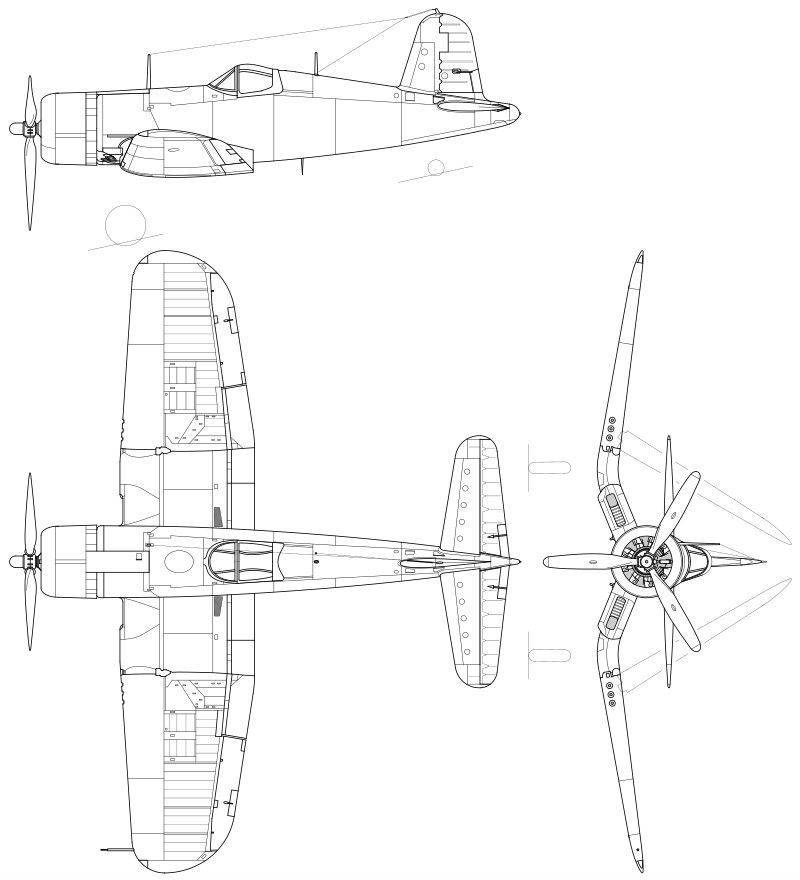 Operational Performance
Operational Performance
When the Corsair entered combat, it wasn’t a moment too soon, as it (along with the Grumman F6F Hellcat) finally enabled the USN and USMC to obtain air superiority against the IJN’s much-vaunted Mitsubishi A6M Zero.
Against the Zero in particular, Corsair drivers racked up a 12:1 air-to-air kill ratio. Overall, the F4U scored 2,100 victories in air combat with only 189 losses, culminating in an overall kill ratio of more than 11:1.
As if that weren’t impressive enough, Corsairs went on to serve in the Korean War, mostly in the air-to-ground role due to the advent of jet-to-jet combat. However, one “Whistling Death” driver somehow managed to shoot down a MiG-15 “Fagot” jet fighter during that conflict.
Corsair as TV star
Many Corsairs thankfully survived the scrapyard of the post-WWII drawdown, and one of the fortunate results was the warbird’s new lease on life as a television star, specifically in the TV series Baa Baa Black Sheep AKA Black Sheep Squadron — starring Robert Conrad (R.I.P.), a young pre-Night Course John Larroquette, a pre-MacGyver Dana Elcar, and Dirk Blocker (son of Bonanza’s Dan Blocker).
As I noted in an article originally published in 19FortyFive in the summer of 2022 and later republished on the military.usnews.uk website:
“As for the Black Sheep Squadron – officially VMF-214 – in particular, whilst that aforementioned TV series embellished a lot of stuff (typical Hollywood for ya), what’s not embellished is that the unit piled up a record of 203 planes destroyed or damaged, produced nine fighter aces with 97 confirmed air-to-air kills, and received a Presidential Unit Citation for their accomplishments—the first Marine Corps fighter unit to be so honored. The Black Sheep’s legendary leader, Maj. (later Col.) Gregory ‘Pappy’ Boyington, scored 26 out of his 28 total air-to-air kills in the Corsair and earned the Medal of Honor.”
Where are they now?
The USN and USMC retired the F4U in 1953 (the same year that the Korean War was officially halted via armistice). The Honduran Air Force (Fuerza Aérea Hondureña) was the last governmental entity to retire the warbird, doing so in 1979.
Out of 12,571 F4Us built, there are 45 privately owned F4Us in the US, with some of the airworthy specimens in the capable hands of the Commemorative Air Force (CAF) – (Dixie Wing) in Peachtree City, Georgia, the Lone Star Flight Museum in Houston, Texas, and the Stonehenge Air Museum in Lincoln County, Montana.
As for many museum static displays, the ones I can personally vouch for are:
I must confess a particular fondness for the latter specimen, as it’s displayed alongside my personal favorite WWII warbird, the Douglas SBD Dauntless dive bomber.

